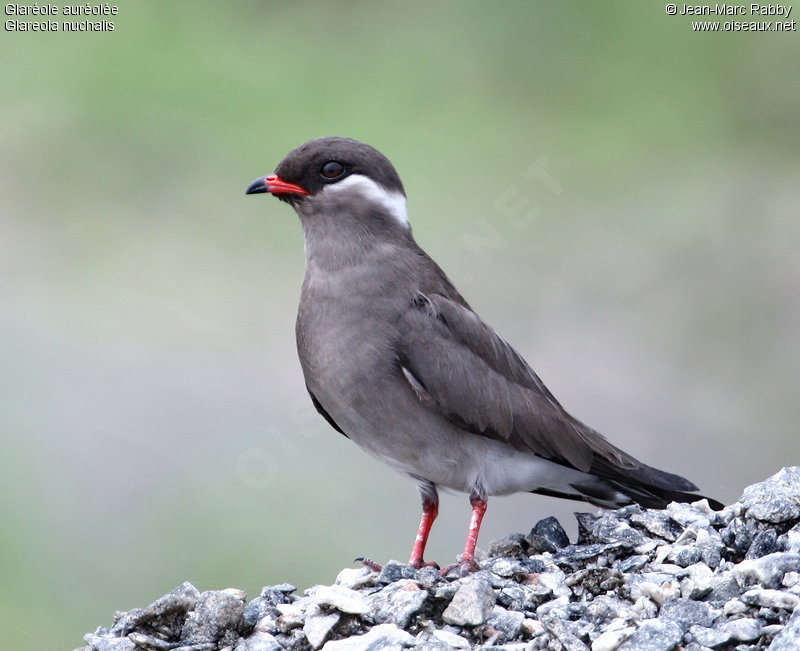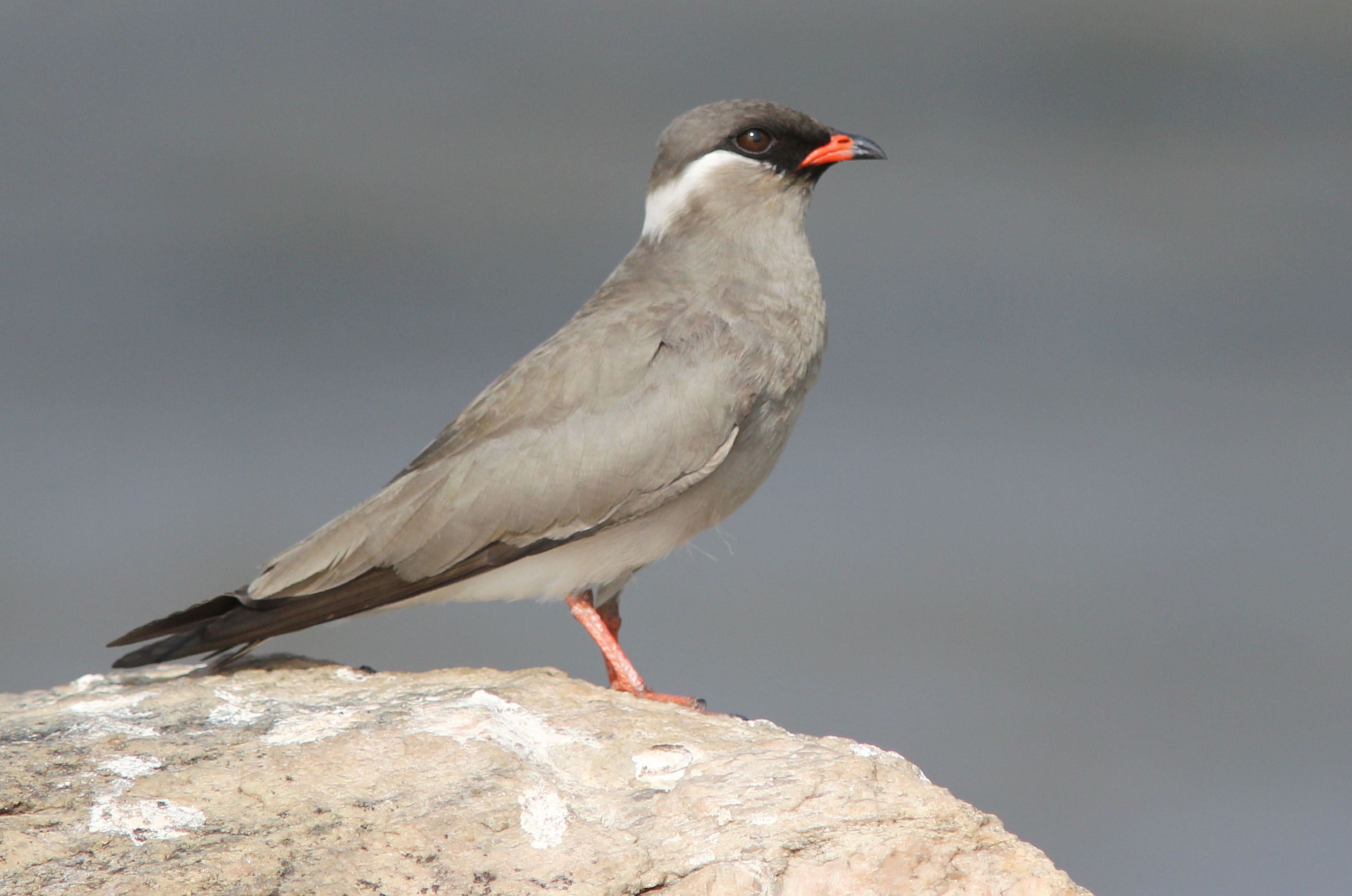
Glareola nuchalis
SUBFAMILY
Glareolinae
TAXONOMY
Glareola nuchalis G. R. Gray, 1849, Fifth Cataract of the Nile,
Sudan. Two distinctive subspecies.
OTHER COMMON NAMES
English: Collared pratincole, white-collared pratincole, rufous-
(or chestnut-) collared pratincole; French: Glarйole aurйolйe;
German: Halsband-Brachschwalbe; Spanish: Canastera Sombrнa.
PHYSICAL CHARACTERISTICS
7.1–7.5 in (18–19 cm); 1.5–2.0 oz (43–58 g). Small, charcoal
gray, paler below, with white collar (subspecies nuchalis) or rufous
collar (subspecies liberiae) on hindneck; legs and base of
bill bright red.
DISTRIBUTION
Tropical Africa.
HABITAT
Larger rivers with exposed rocks and sand bars.
BEHAVIOR
Usually in small flocks; perch on exposed rocks in midstream
between bouts of aerial foraging. May also perch on riverside
trees if rocks submerged. Migratory according to water levels,
moving away from rivers that are flooded. Rather silent as a
rule. May become tame around human habitations.
FEEDING ECOLOGY AND DIET
Forage both aerially and on rocks mostly at dawn and dusk,
catching insects in flight or by running after them. May catch
insects around street lights at night.
REPRODUCTIVE BIOLOGY
Nest singly or in small colonies on exposed rocks, laying two
eggs in a hollow or crevice of bare rock. Both sexes incubate
for about 20 days and feed the chicks for a further 20–30 days
when they reach flying age.
CONSERVATION STATUS
Not threatened, but some stretches of river may be rendered
unsuitable by damming and unseasonal release of water downstream.
Rock pratincoles no longer occur in Sudan, where first
collected, so numbers are probably declining.
SIGNIFICANCE TO HUMANS
None known.
Photo Gallery of - Rock pratincole




 Animalia Life
Animalia Life